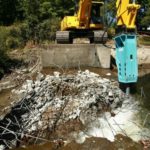- Webinar No: WBNR 1188
- PDH Units: 2
No data found for Custom Course Number
No data found for Custom Course Units
- Webinar No: WBNR 1188
- PDH Units: 2
Intended Audience: Electrical, Mechanical & Energy Engineers
Credits: 2 PDH Units
When: Wednesday 3/27, 2 - 4 pm ET
This webinar will discuss the impact of electric vehicles on the electric grid while highlighting the role of electric vehicle as a mobile energy storage demand response tool for the electric transmission and distribution grid. The webinar will discuss the critical role electric vehicles will play in the 100% clean and renewable energy systems by 2050 or sooner, especially as many cities adopt internal combustion engine ban. Various issues related to smart charging, load factor, system-coincident peak vs. evening charging, cyber-security, vehicle 2 everything will be discussed in great detail. Additionally, various energy storage types, applications, key energy storage components, critical information, and stacking options will be addressed. This webinar is intended for electrical, mechanical and computer engineers as well as others involved in a technical and non-technical level in the renewable energy, and electrification who are interested in learning more about the future of the energy systems and the impact of EVs on the grid and future vehicle 2 everything programs.
Date: Wednesday | March 27, 2024 | 2 - 4 pm ET Credits: 2 PDH Units
Learning Objectives
At the successful conclusion of this webinar, you will have the following knowledge and skills:- Generation, transmission and distribution EV impact
- Smarter charging
- System/substation/feeder peak changes as a result of EVs
- Demand response
- Non-wire solutions
- Stacking options
Special Webinar Instructions
After payment, please visit this webinar page, click “Start Course” and fill out the Webinar Registration Form. You’ll receive email notification and details on how to join the webinar. You will then be able to access the webinar slides, test your system and receive webinar reminders. After completing the webinar requirements, your certificate of completion will be saved and available for download in your profile. We value your feedback! Please rate this webinar after completion.Group Discounts Available
Course Reviews
4.3
- 5 stars6
- 4 stars2
- 3 stars1
- 2 stars1
- 1 stars0
Once completed, your order and certificate of completion will be available in your profile when you’re logged in to the site.











This webinar had a lot of information and was a little all over the place. Most of it wasn’t particularly relevant to me, but it was interesting.
It is nice to learn of a hopeful and possible future. I have driven EV’s for over 14 years and 230,000 gas free miles. The Vehicle to Home is the next promising technology.
I am a 19 year retired engineer after 38 years in electric utility power generation, mostly coal-fired. So I am now obsolete. I have also owned a Chevrolet Volt for 9 years. Dr Mousa highlights the many challenges facing electric utilities and vehicle makers and regulators over the past 20 years and those ahead. Despite the promises of low-cost or “free” electricity from renewables, the cost to consumers keeps going up, but the “why” remains a mystery to consumers. Control of the grid has become a nightmare, going from small area regulation of a few generators, to half the country by one regulator (E.G. MISO), and thousands or millions of sources. The millions of sources need to be included in the control loop if reliability of the grid is to be maintained. The economics of renewable sources need to reflect the reality of curtailment of output to match demand, just as traditional fossil sources have since the beginning. Dr Mousa raises concern of the capability and reliability of the local distribution grid, which has been mostly ignored. Tree trimming is an obvious discussion item, it is easy to cut when regulators put squeeze on rates and find out later that reliabililty goes down. Winter 23 brought rare ice storm to Southeastern Michigan, the cross-arm on my local circuit broke under weight if ice, service lost 40 hours. Impact of electric car charging on distribution is not addressed yet, a future problem. V2G remains a dream, many questions? How to structure system, rates, control, many issues not addressed. I’ve seen inverters for my Volt from 12 V DC to 120V AC for outage service, but my generator works ok. Lot of words in this long seminar. Suggest it be broken into two separate presentations, more specific to issues.
David Smith
Monroe, MI
[email protected]
This is a good broad overview of the EV and other Renewable Energy technologies and how the community as a whole is dealing with integration and optimization of energy production, delivery and utilization.
A very timely topic which underlies the success or failure of electrification of vehicles, residences, & buildings. All the focus has been on electric vehicles and converting cars and homes away from fossil fuels. But there is A LOT to be done to prepare and integrate electrical generation-distribution-use to succeed.
This was very informative and interesting. The subject was covered with skill and intelligence. More instructors should be like Dr. Mousa,
Excellent webinar. Answered the questions posed. Thank you
Wow! Significant amount of information. Appreciated the presentation as it covered the values and the challenges.
Great Job – Lots for everyone to learn
Excellent Class